Tenkara fishing has its beginnings as a centuries-old form of sustenance fishing, developed by the people on the high mountain slopes of Japan, who used long, reel-less bamboo rods to target Yamamae trout, Iwana char and Amago (cherry salmon). Literally meaning “from the heavens,” tenkara is thought to refer to the landing of a fly on the water from above, as seen from a fish’s perspective. Kebari tsuri is the Japanese translation of fly fishing, and the sub-category of tenkara fishing refers to fishing unweighted flies on high mountain streams. The word tenkara was brought into mainstream by the writings of “the father of modern tenkara,” Soseki Yamamoto, and today tenkara fishing tends to be used exclusively to describe fly fishing with long, reel-less rods on a range of landscapes.
Advertisement
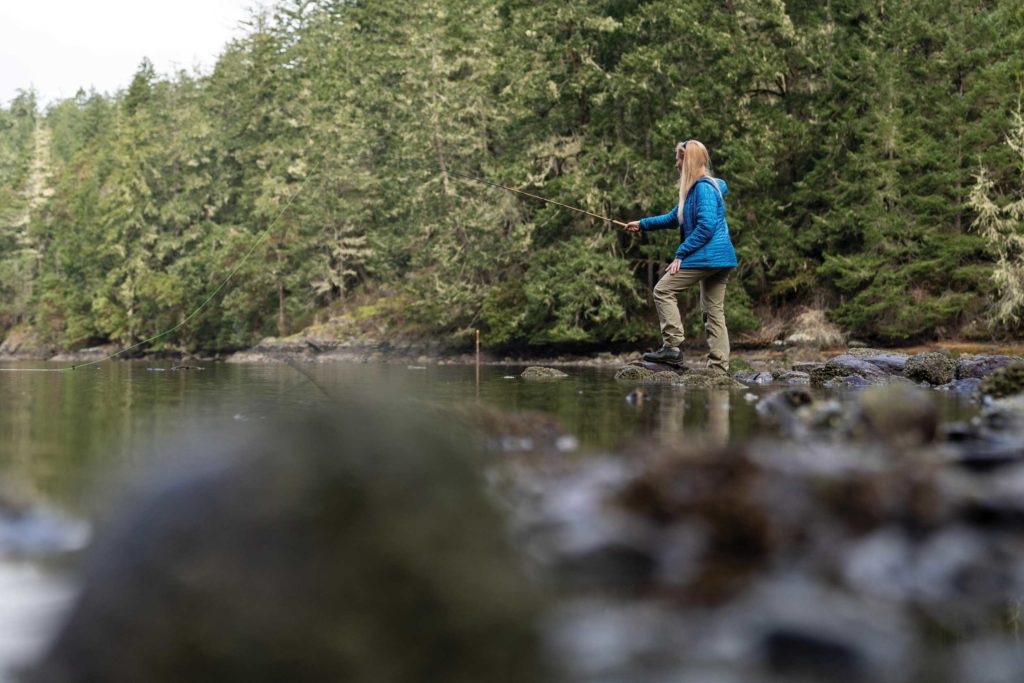
Japan and Vancouver Island are both islands on opposite sides of the Pacific Ocean that share similarities in geography, such as high mountain streams, rocky coastal banks and small, overgrown lakes, making this the ideal location for a western adaptation of a centuries-old angling technique to fish for trout, char, bass and even pink salmon. Challenges that come along with west coast geography include rugged terrain, overgrown waters, rocky banks and tight casting conditions, making tenkara rods a highly effective option to overcome these obstacles.
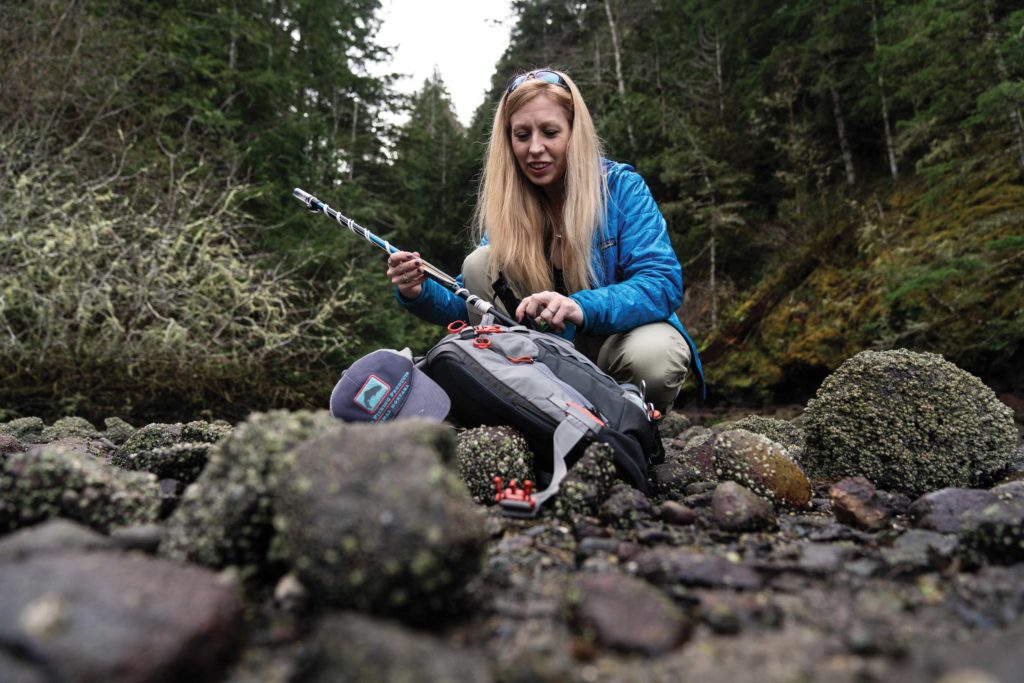
The long rod allows further reach with articulate fly placement and using light lines facilitates more control, more stealth and more sensitivity. This method of angling eases the learning curve for beginning fly anglers by focusing on the basics, whereas the more seasoned angler is stripped of excess flies, lines and gear and has to rely on what can be changed within. Technique is paramount and results come from changing presentation, not fly pattern. Consequently, this technique of fishing led to the one-fly philosophy, in which an angler uses one style of kebari (fly) to fish every stream, every fish, every time.
Advertisement
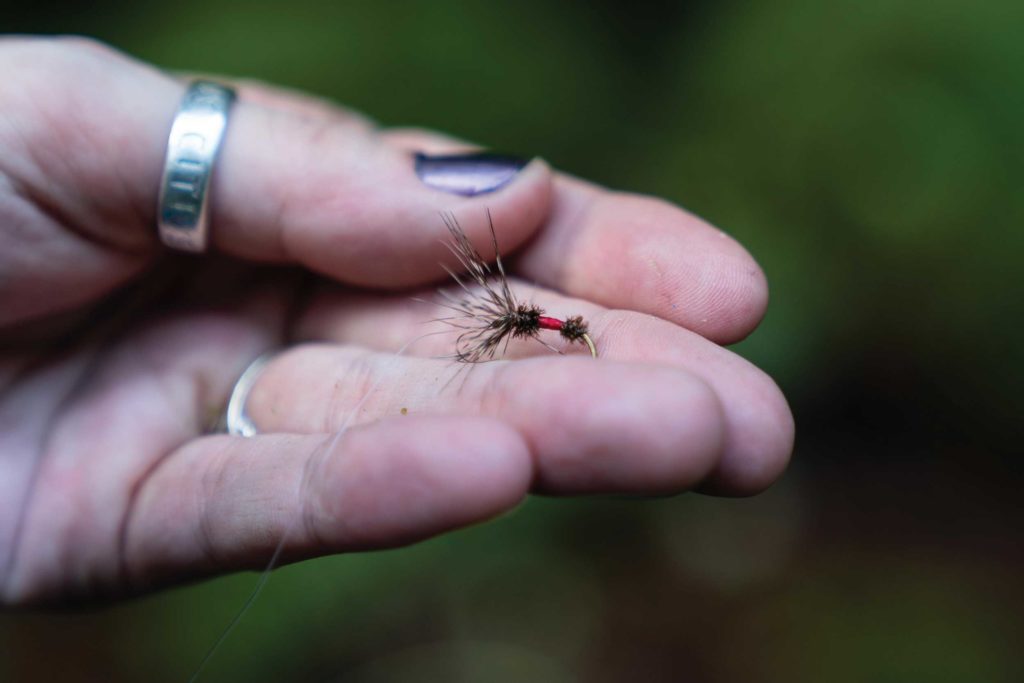
Reel-less, telescoping tenkara rods have a slower action than fly-fishing rods, with the action quantified as a ratio of where the rod bends, not the force to bend it. Modern tenkara rods are typically measured by length, with common sizes ranging from nine to 15 feet. A short line, called a Lillian, connects the rod to the main line, and the selection of main line material is a matter of individual preference. Traditional furled line consists of a tapered, multistrand line and is effortless to cast, but quickly becomes waterlogged and tangles easily like braided line. Level line refers to a single diameter of monofilament, nylon or fluorocarbon and is economical, easily adjustable and sensitive with a delicate presentation; however, tangles are difficult to remove and unless fluorescent line is used, it is tough to see. A western innovation for tenkara fishing which is easy to cast, durable, highly visible, virtually tangle free and offers a stiffer action involves using a length of floating fly line, cut slightly shorter than the length of the rod.
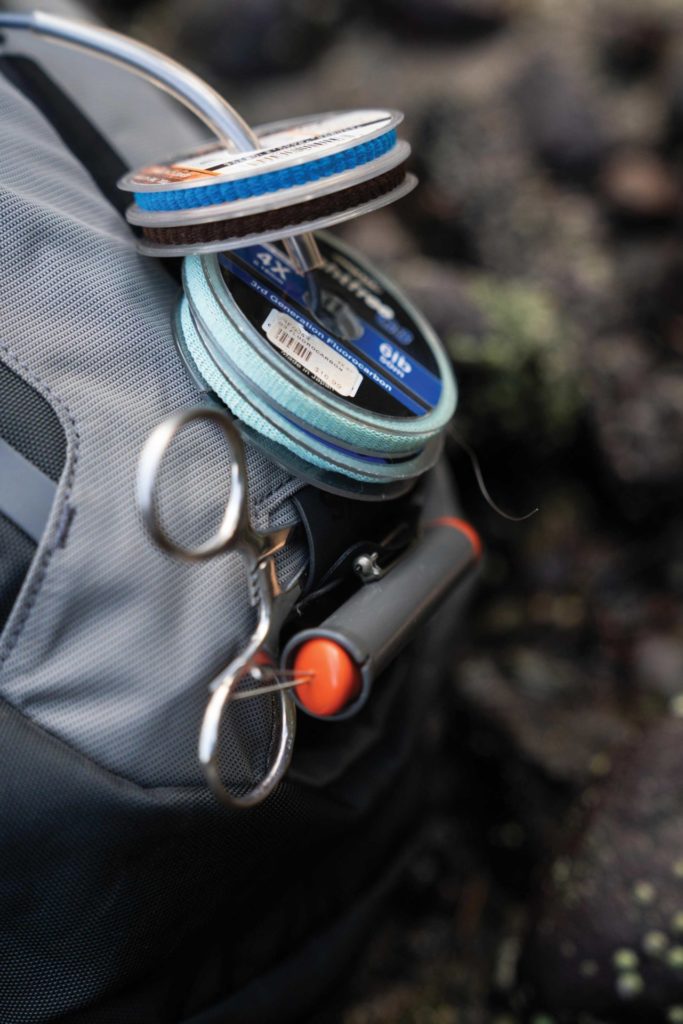
At the end of the main line is four to 12 feet of 4X or lighter fluorocarbon tippet. I find that a longer length of tippet allows for a more natural drift, so long as the length of line is not too long to control. Fluorocarbon is favoured for this application, due to its stiffness, sensitivity, sinking properties and lack of line memory.
Advertisement
In contrast to western flies, which are designed to “match the hatch,” tenkara flies (or kebari) are more impressionistic, attractor flies developed for high-gradient, nutrient-poor mountain streams. They are of a simpler construction, intended to be tied streamside without a vice, made only with thread and a single hackle feather. Kebari are classified by their profile, meaning the direction of the hackle and resultant action of the fly. The most widely recognized pattern style is sakasa kebari, a wet fly tied with a reverse-facing hackle that opens like a parachute when you pull the fly. The most commonly fished kebari style in traditional tenkara fishing is the futsuu kebari, which is also fished as a wet fly; however, it is tied with a stiff hackle that maintains its profile in strong flows and can anchor itself against the current. The jun kebari most resembles western flies, and features a soft, swept-back hackle that closes when the fly is pulled.
One of the first techniques to master when it comes to fishing without a reel is line management, as there can be over 20 feet of loose line to control. A simple foam spool and a hook holder or a tenkara line winder make all the difference in preventing a tangled mess. To store the line on your rod, wind loosely to avoid line memory and begin spooling at the rod end so that it unwinds cleanly from the fly when it’s time to fish.
Similar to fly fishing, in tenkara casting, it is the line that loads the rod and delivers the fly. The cast involves a lift of the rod tip, followed by a short forward flick, while keeping the rod tip pointing skyward. To get under overhanging trees and other obstacles, a bow and arrow or sling slot-style cast can be used. For a free, natural drift, the rod tip should remain high, keeping the line tight and the main line off the water. At the end of a drift, the wrist can simply be turned over to flip the line and cast again. The tippet is light and, without a reel, there is no additional line to play the fish, so when a fish strikes, the fight must be strategic to avoid breaking off. Trying to steer the fish upstream uses the resistance of the water to your advantage and applying low side pressure (if possible) will tire a fish more quickly. To land fish with a long rod, lift the rod tip until you can reach the line, bring it in, and release the fish.
Although definitions vary regionally, in British Columbia, fly fishing is “angling with a line to which only an artificial fly is attached. Floats, sinkers or attracting devices may not be attached to the line when fishing is restricted to fly fishing only.” An artificial fly only zone can only be fished with “a single pointed hook dressed only with fur, feathers, hair, textiles, tinsel and/or wire to which no external weight or external attracting device is attached” (BC Freshwater Fishing Regulations Synopsis). Tenkara fishing is legal on any waters open to angling, including fly fishing only and artificial fly only areas, opening up more waters and providing an accessible way for all anglers to get out there.
Fly only regulations are a conservation measure to maintain quality, sustainable fish populations and opportunities by increasing the survival rate of released fish (when handled properly), as well as those fish that are not caught due to increased challenge for the angler. Decreased incidental catch of spawning salmon by using fly fishing methods further minimizes the impacts of recreational fishing. On Vancouver Island, there are about a dozen lakes regulated as artificial fly only and almost 20 rivers have sections designated as fly fishing only, including Sooke, Cowichan, Gordon, Caycuse and Nanaimo rivers. On the South Island, fly only stillwaters include Pete’s Pond, as well as Tadjiss, Lois, Rowbotham, Anderson, Healy (Panther) and Henry lakes, although access can be a challenge due to increasing numbers of locked gates blocking roadways. Always check the BC Freshwater Fishing Synopsis and/or BC Sport Fishing Guide for angling regulations specific to the waters you are fishing.
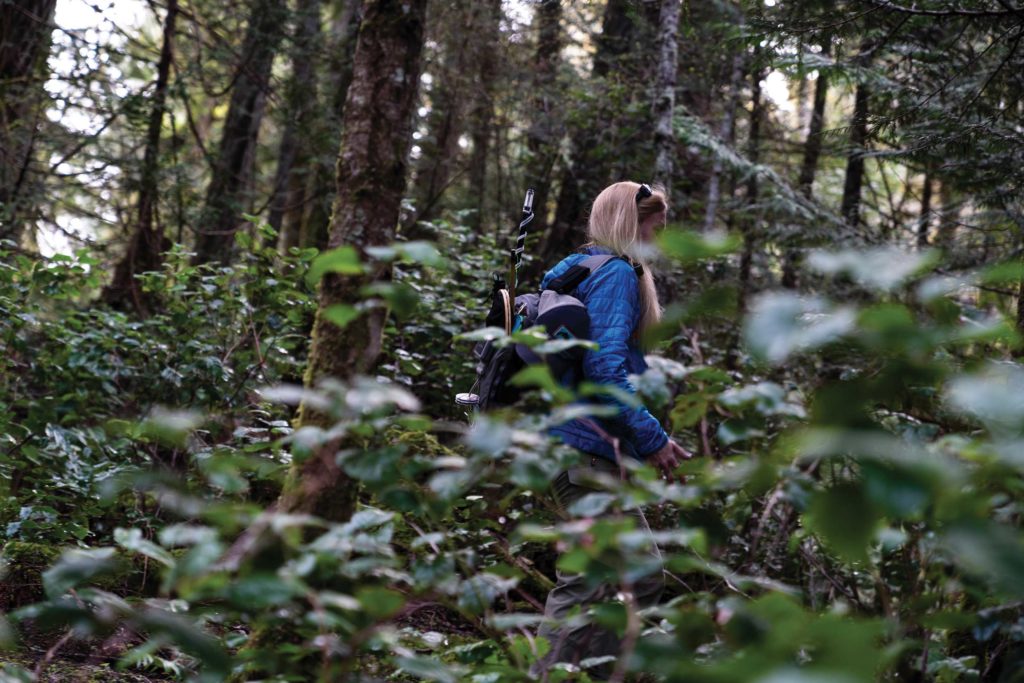
Southern Vancouver Island features a wide range of opportunities to hone your tenkara technique, whether you prefer streams, stillwaters or saltwater shore casting. Near Victoria are Matheson, Thetis and Durrance lakes, which all have trail systems circling their perimeters and provide great opportunities for trout and smallmouth bass, but the largest rainbow trout on the Island Outfitters leaderboard each year come from Langford and Elk lakes. Just outside Victoria, up the Sooke River, are the trailheads for the hike-in lakes Peden, Grass and Sheilds, which provide an option to cast a fly on less pressured wilderness waters without straying too far from civilization. Eastern brook trout are found in Spectacle Lake and Dolly Varden char in Fairy Lake. Trout paradise can be found on the renowned Cowichan River, with the opportunity to catch and release three species of trout in a single day. Sea-run cutthroat trout, rockfish, surfperch and many other species can be caught on beaches from Sooke to the Saanich Peninsula, especially where the creeks flow inland during the rising tide.
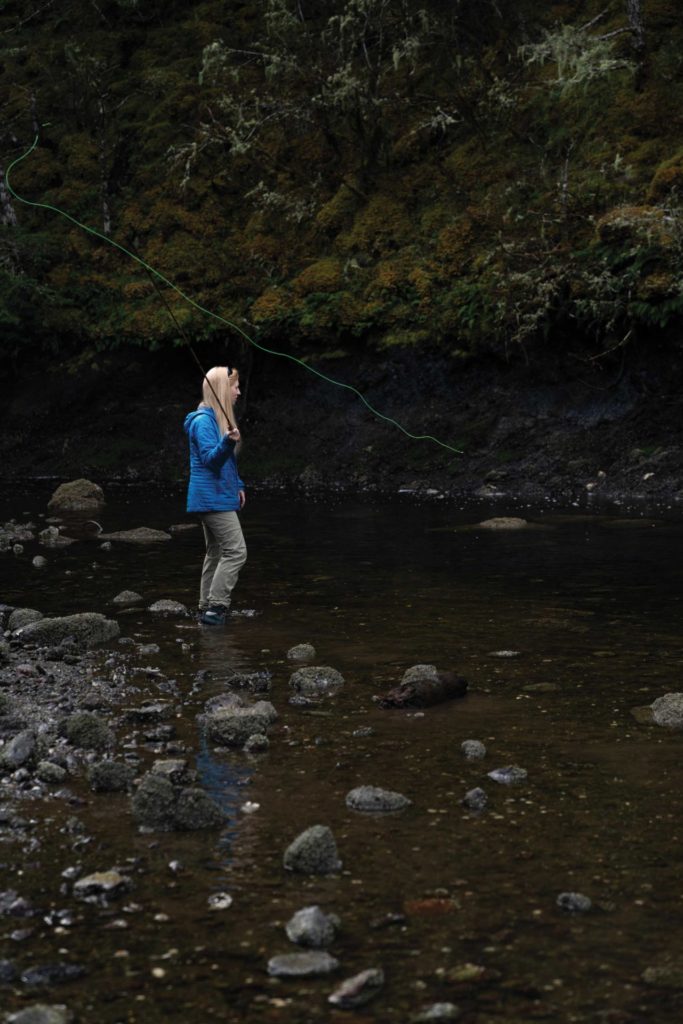
The minimalist nature and universality of tenkara fishing brings us back to basics in a way that embraces the philosophy of tenkara, while connecting us with the nature surrounding us. Success is more about the angler than the gear and circumstance, putting the onus on ourselves to look within to what we can control. As Yvon Chouinard said, “The more you know, the less you need.”